Retrieving the Oasis—A Heart-tugging Story of Desertification Control
2019-05-10ByBoNingTangLin
By Bo Ning & Tang Lin
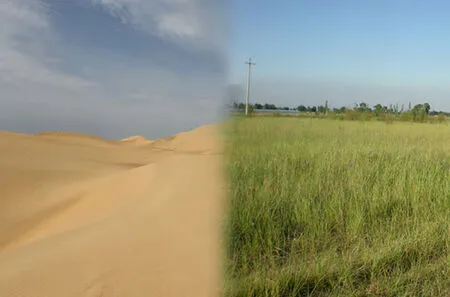
库布齐实验区治理前后The desertificated land was transformed into grassland after years of application of the “algae-grasses-shrubs” mode
Some 1600 years ago,a folk song was sung: “Under boundless skies,on vast plains,cows and sheep can be seen as the wind blows grass down.” This song was a vivid account of the beautiful and fertile prairies in Northern China and the carefree life of the Chile tribesmen during the years. However,over one thousand years later,this once-prosperous land disastrously degraded into a vast desert area. In one part of this area,Hobq Desert,there lies a town named Jiefangtan,where the annual rainfall is less than 300 millimeters. When spring came,this town would become the home of sandstorms in Northern China,which destroyed the crop fields and ecosystems of the local herds,and drove away the local people from their hometowns.
However,the arrival of Prof. Liu Yongding’s research team from the Institute of Hydrobiology at the Chinese Academy of Sciences in Wuhan at the beginning of this century has greatly transformed this seriously desertified district and revitalized the land,constituting a now much-told tale of ecological restoration by Chinese researchers.
Algae Application in Desertification Control
Algae are abundant in both varieties and habitats,ranging from the tropics to the North and South Poles,from snow-capped mountains to hot springs,and from water tables to the soil’s surface. Few realize that they can be applied to desertification control.
Beginning in the 1970s,Prof. Liu’s research team have left their footprints in places around the Yangtze River,Yellow River,Amur River,and deserts in Northwest China,and carried out extensive studies on algae,which indicated that microalgae that grow in deserts can withstand extreme temperatures,long droughts,strong light,and ultraviolet radiation. Surprisingly,filaments of some desert algae varieties can intertwine with each other,binding the sand particles closely. Extracellular polymeric substances such as exopolysaccharides are secreted by microalgae and accumulate around the filaments,forming biocrust organisms which cement the sand particles. Through the biocrust on the shifting sand surface,sand can be settled,water held in the ground,and soil erosion avoided. Moss that grows on the sand’s surface can even feed small animals,thus constituting a micro-ecosystem and accelerating the conversion from sand to soil. Different from the conventional “arbor-shrubgrass” method,the research team has initiated a new desertification control route from algae to grass,shrub and arbor,which is more conducive to the restoration of ecosystems in the desert.

2007年冬,中国科学院水生生物研究所研究员刘永定在实验区考察Prof. Liu Yongding in the experiment area in Hobq Desert in the winter of 2007
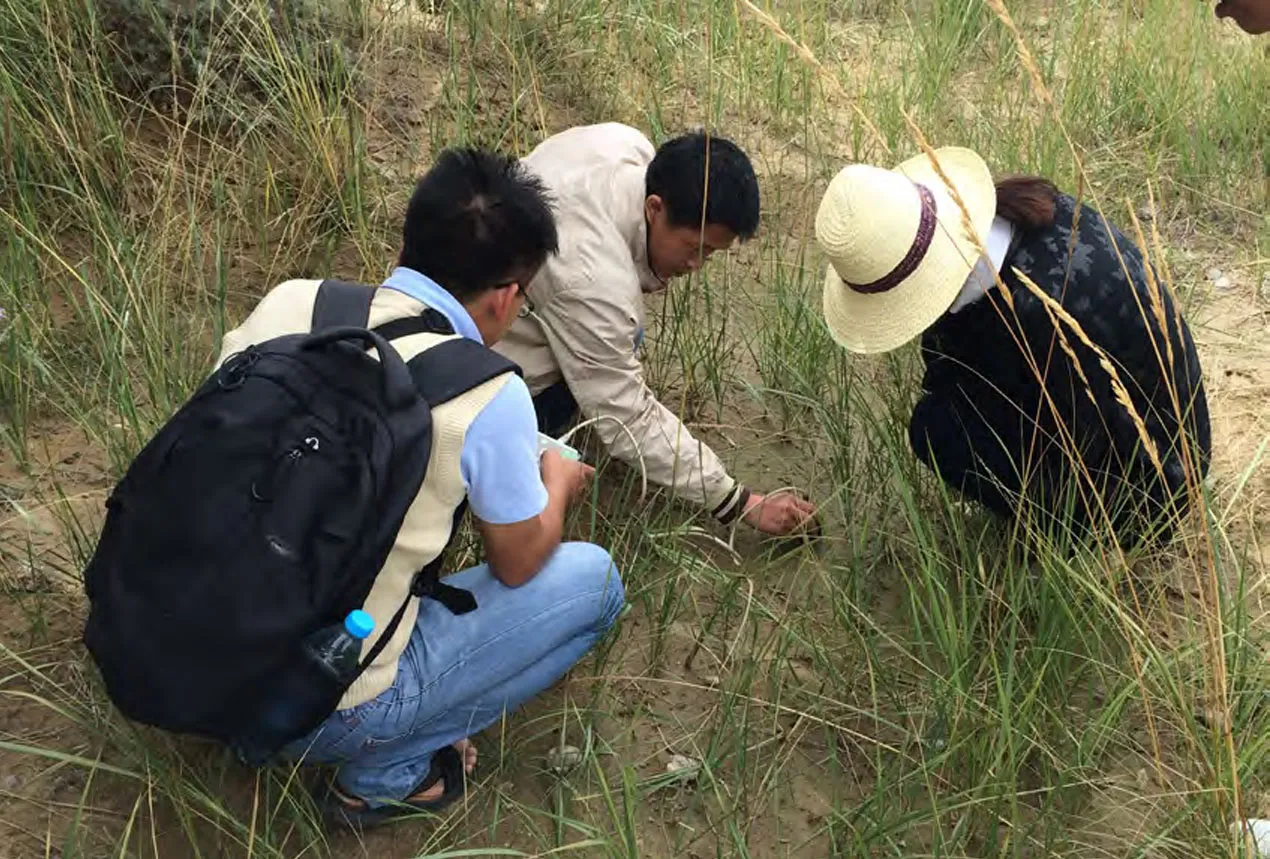
2015年9月,李敦海研究员(中)在实验区考察 Prof. Li Dunhai (middle) and his workmates in the experiment area in September 2015
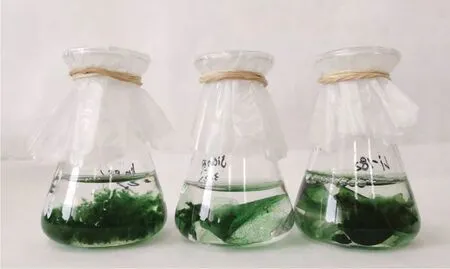
养在培养瓶中的荒漠藻 Desert algae cultivated in bottles
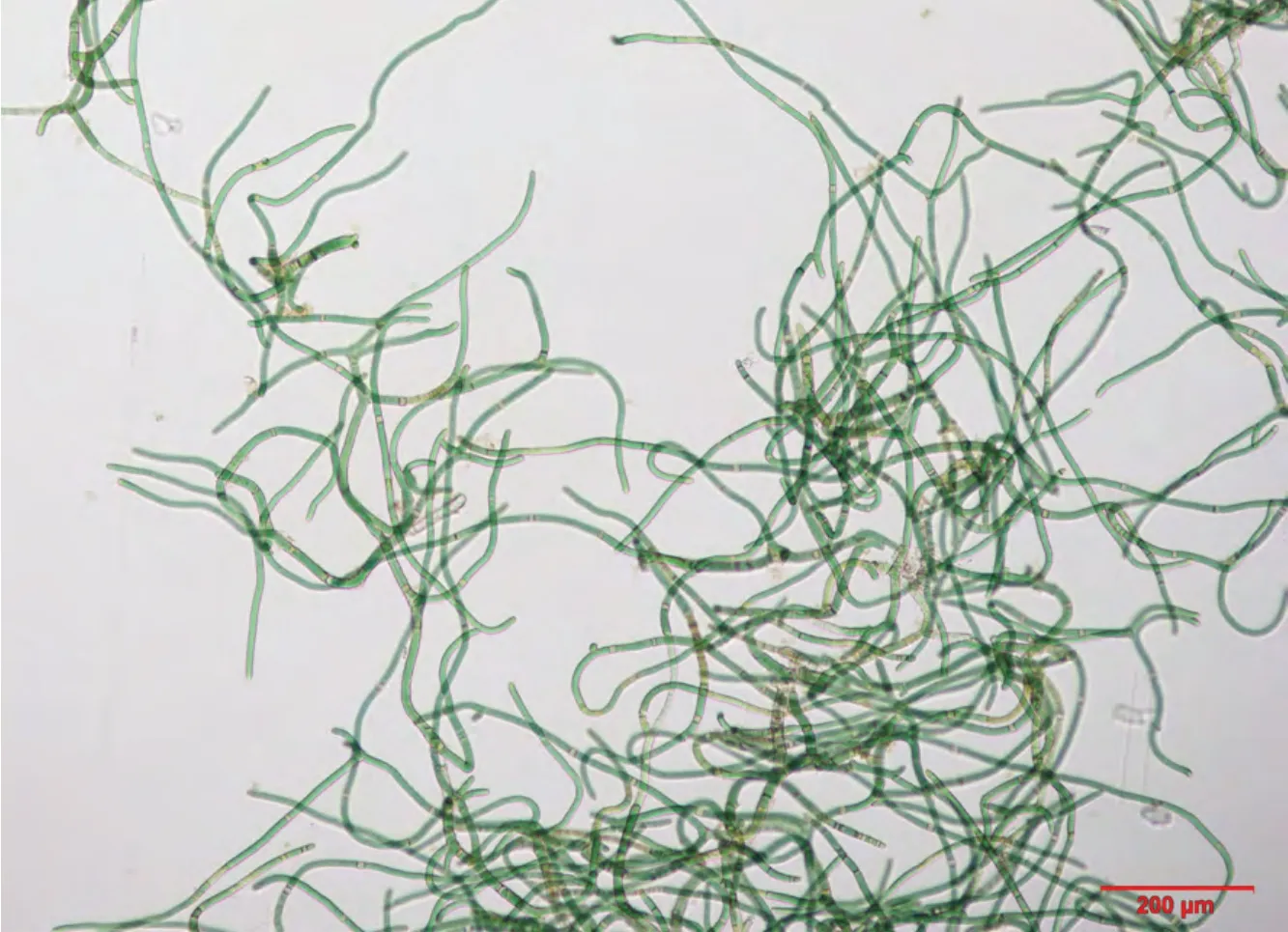
显微镜下的荒漠藻 Desert algae under the microscope

基地培养池大规模培养荒漠藻 Desert algae cultivated on a large scale
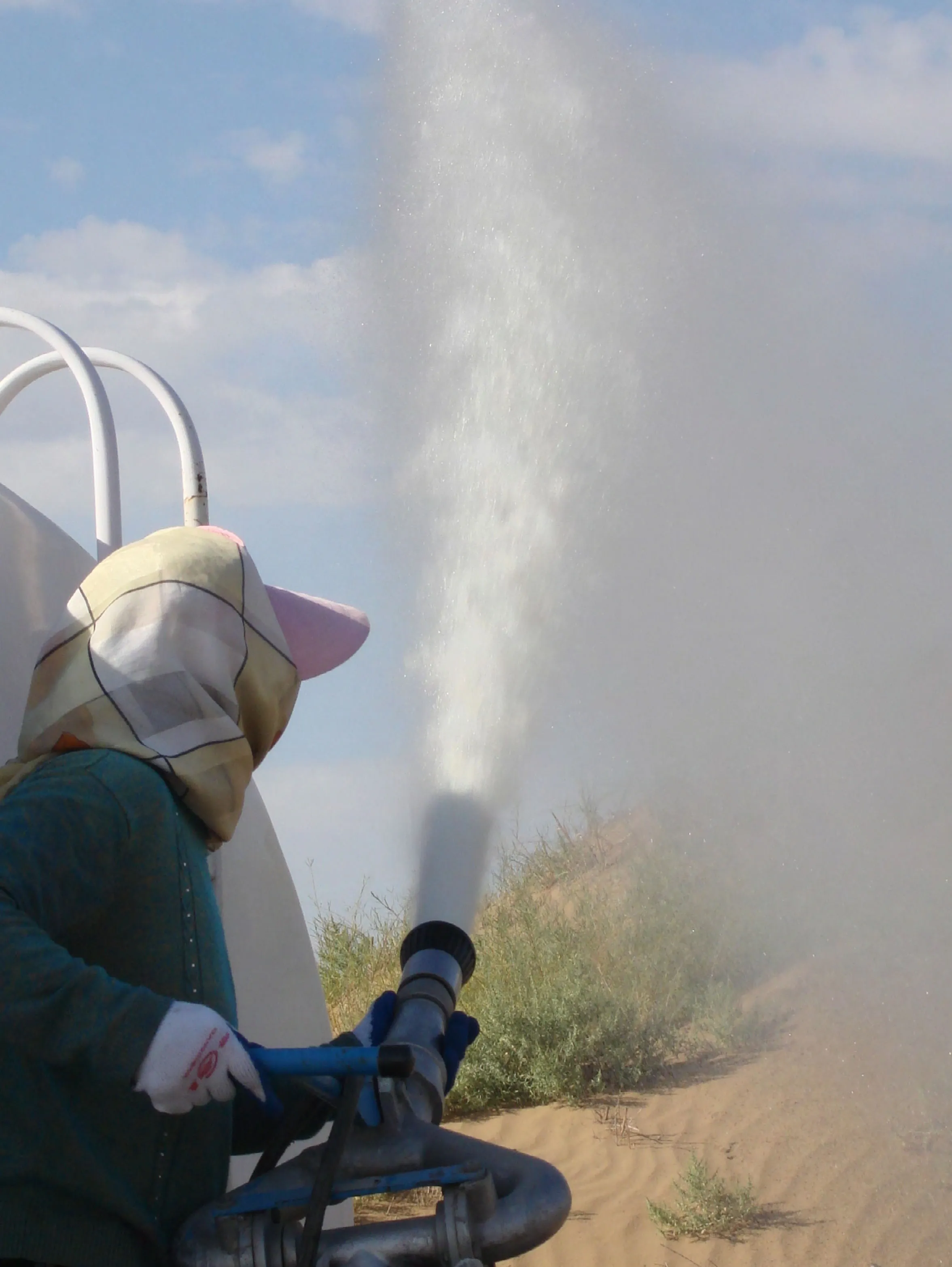
大规模喷洒荒漠藻培养液Liquid of algae cultures sprayed onto the surface of desertificated land by machines
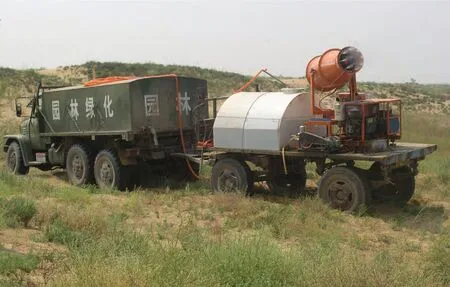

绿洲再现 Oasis began to come back to the desertificated land
Since 2001,the team has experimented with this new method in the Hobq Desert in Inner Mongolia. Experiments were conducted on 3,000 mu (1 mu is equal to 666.67 square meters) of desert. Four years later,the coverage rate of algae and grass exceeded 60%. The number increased to more than 90% within another three years. The restoration efforts gained a sharp effect. A crust layer can be formed within a short period after engineered algae are inoculated on the surface of the shifting sand on a large scale. Interestingly,though the rainfall of the Hobq Desert is scarce,the needs to water the microalgae can be met during the day thanks to the dew that condenses in the evening or at night. Therefore,water resources are fully utilized and manual maintenance isn’t required to much extent.
Return of the Herdsmen
Such huge success can definitely be attributed to the strenuous efforts of the whole research team,both young and old. The difficulties in desertification control,fund shortages,and a harsh life in desert never have defeated them.
Prof. Li Dunhai was one of the first research fellows in this area. Every year,the team members go to Inner Mongolia for months to conduct research. He says he can still remember when they would sleep in the herdsman’s houses at the very beginning of the program,and how they were not accustomed to the local foods. They had to cook for themselves to have a taste of their hometown. Later,when the sand turned into soil and grass began to grow,their lives became comparatively improved.
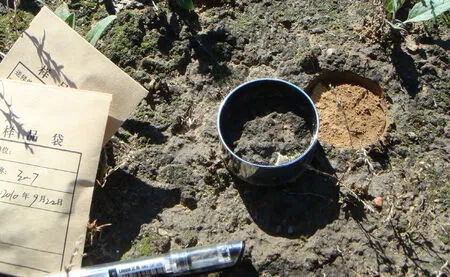
样品采集 Sample collection
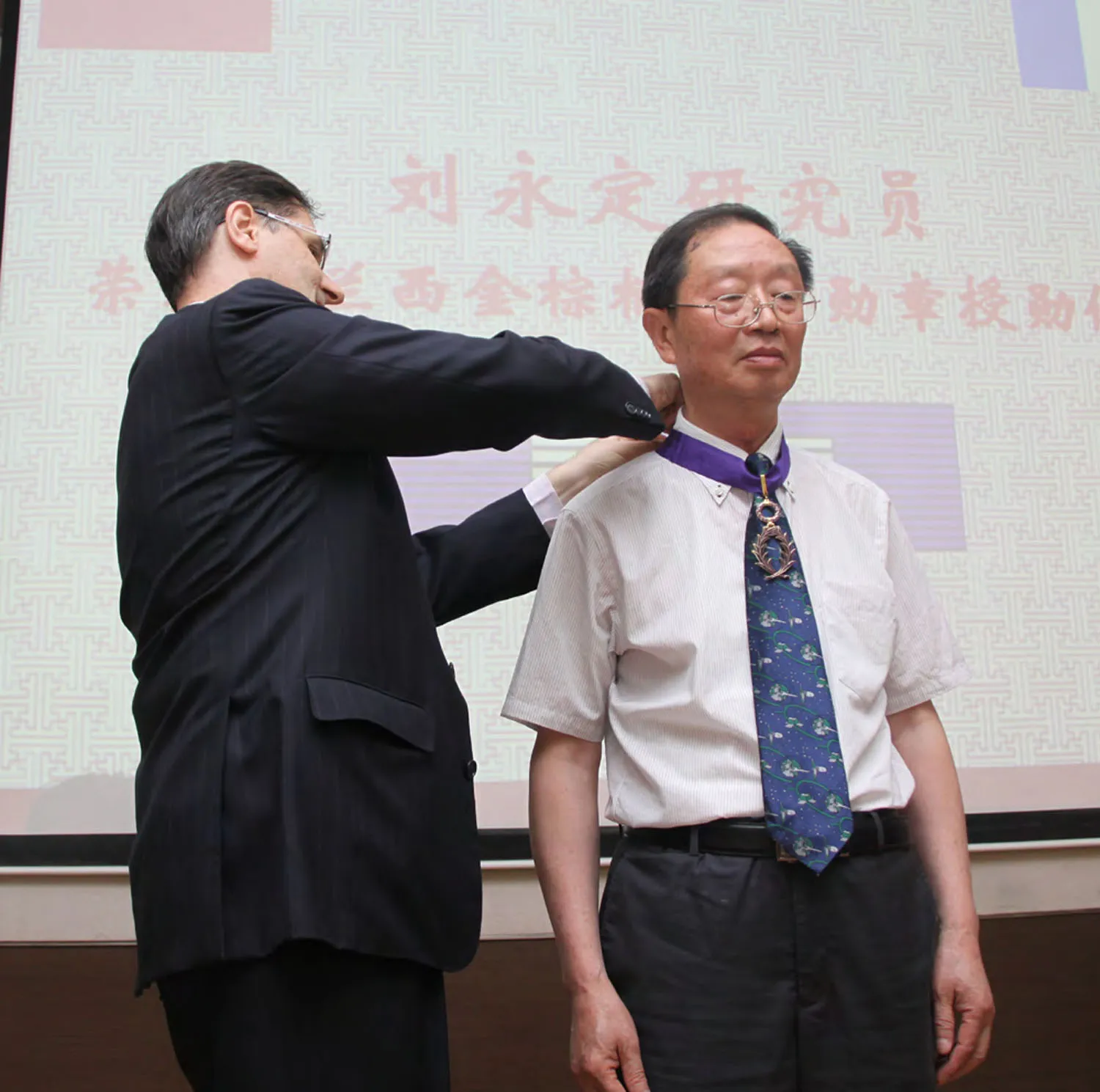
2012年5月,法国驻武汉总领事馆时任总领事Serge LAVROFF代表法国政府将象征法国文化教育领域最高级别荣誉的法兰西金棕榈学术与教育统帅勋章挂在刘永定研究员胸前 Mr. Serge Lavroff,the then Consul General of France in Wuhan,bestowed Prof. Liu Yongding with the Palmes Académiques with the rank of Commandeur on behalf of the French Republic in May 2012. The Ordre des Palmes académiques (Order of Academic Palms) is a French national order for distinguished academics and figures in the world of culture and education.
Dr. Peng Chengrong,a much younger one in the research team,also remembers that,difficult living conditions were not big problems,while the real problem was the loneliness in the desert. As the research station was located in a remote place in the deep desert,the Internet was the only way to access the outside world. Team members also raised and planted vegetables by themselves,which greatly enriched their leisure time.
With the continual application of their research products,now over 50,000 mu of desert land has been successfully transformed,spanning the Hobq Desert (Dalad),Ulan Buh Desert (Dengkou),Mu Us Desert (Ejin Horo),Horqin Sandy Land (Naiman),and Hulunbuir Sandy Land (Evenk). This transformation has resulted in immeasurable economic and ecological gains. Villagers and herdsmen who had left their hometowns because of desertification returned and rebuilt their homes. In addition,the microalgae method provides job opportunities for them,which has changed both the landscape of their hometowns and their lives.
International Cooperation
As an important example of desertification control,this place has been frequented by researchers from France,Italy,Germany,America,Israel,and other countries,who praised the team as the “world leader” in restoring damaged terrestrial ecosystems with algae. Teachers and students from the University of Florence,Italy come here on a regular basis,to study together with Chinese researchers,during which they’ve developed good friendships. And their regular exchanges of ideas and resources on desertification control continue when the Italian researchers return to their home country.

2011年4月,李敦海研究员(左四)与参观实验区的欧洲专家合影留念Prof. Li Dunhai (fourth from the left) and researchers from home and abroad in April 2011
Up to now,the relay race on desert algae research carried on by three generations of researchers has not only helped recover the deserts in China,but also brought hope to foreign countries,especially those along the Belt and Road,which also face the problem of desertification. For example,this technology is proposed to be applied to the engineering of the Riyadh-Mecca Highway project and will be a major topic of research in the planned Middle East Biocrust Research Center.
Devoting themselves to the study of algae for decades,the Chinese researchers remain true to their original aspirations—as simple and diligent as they were. In the interview,Prof. Liu Yongding dubbed his researcher team “a group of craftsmen” jokingly. He emphasized that they aim to restore devastated ecology rather than transform the desert ecosystem with algae. The essence of their research lies in their respect to nature,to the natural ecosystem of desert,and to the harmony between man and nature,which they yearn to bring back through their endeavors to combat the desertification caused by human activities and global climate change.
